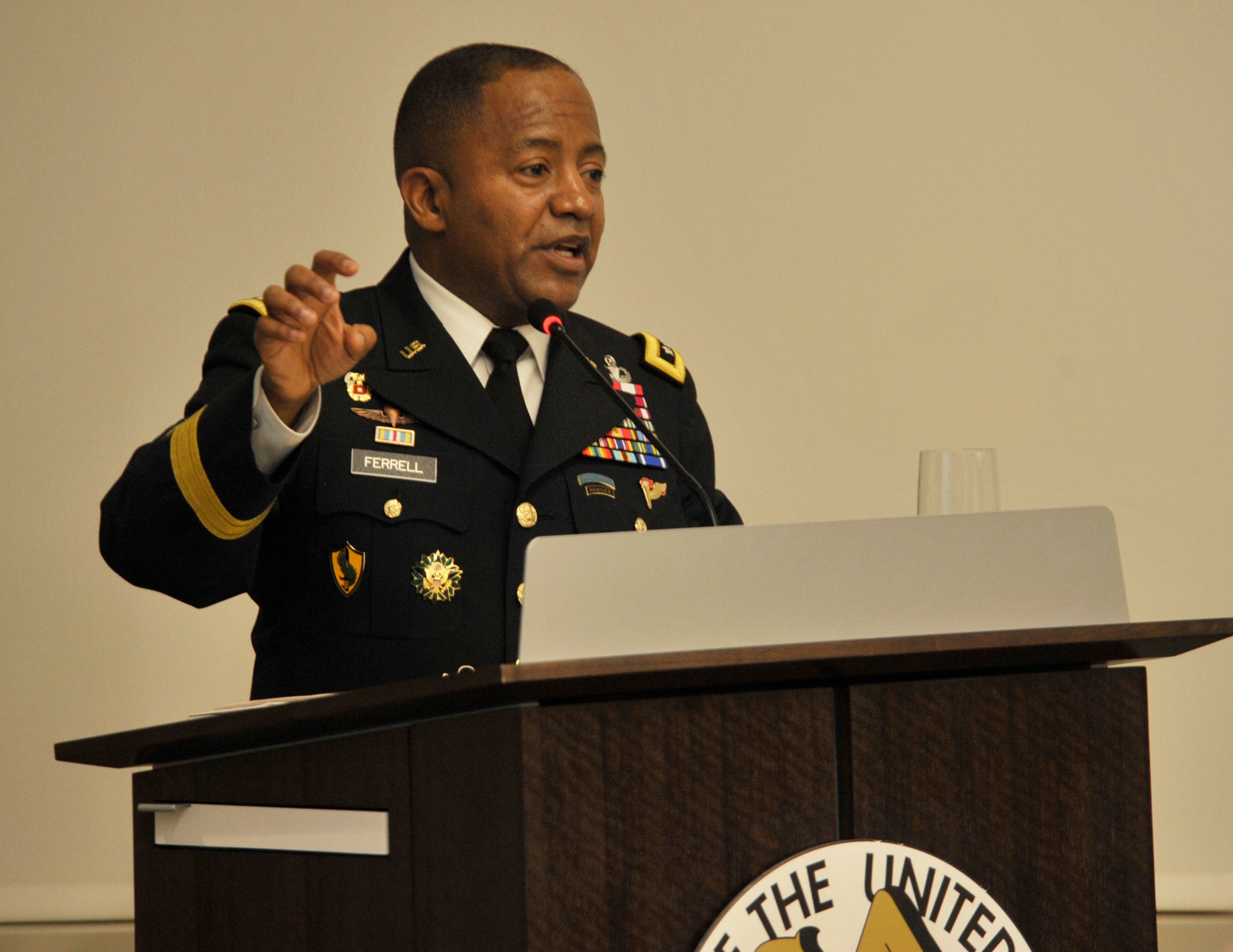Army Bulking Up C4 and IT Capabilities for Warfighters
Army Bulking Up C4 and IT Capabilities for Warfighters

The Army is moving on multiple fronts to modernize, streamline and bulk up its global information network, the vast array of command, control, communications, computer and information technology capabilities providing critical direct support to warfighters around the world, according to the Army’s chief information officer, G-6.“The number one priority is readiness, and the network enables that priority for our Army,” Lt. Gen. Robert Ferrell said at a March 24 breakfast of the Association of the U.S. Army’s Institute of Land Warfare, held at the AUSA Conference and Event Center in Arlington, Virginia.The broadest goal is to greatly expand the capacity of the entire global network, said Ferrell, who has served as the Army’s CIO/G-6 since 2013. “Now it runs at about 10 gigabytes, and we’re going to increase that to 100 gigabytes,” he said.Virtually every echelon of the Army will be affected by the efforts to streamline and enhance the flow of communications and information between commanders and warfighters, he said. “We have so many separate and disparate networks,” Ferrell said. “We are working to ‘flatten’ that environment so we can have command and control from Cyber Command down to the tactical edge.”One effort is creating “home station Mission Command centers” to standardize the disparate, off-the-shelf technology that the Army’s corps and divisions have purchased piecemeal over the years, he said.Last year, the Army inventoried all those systems and came up with a “standard, bottom-line capability package that we want to have at every corps and division,” Ferrell said. Four installations are in line to be upgraded this year, and another six to 10 will be upgraded next year, he said.The final result will “give us the ability to communicate from home and have that communication projected anywhere around the globe,” Ferrell said.Other initiatives involve outfitting 35 C-17 aircraft with new mobile suites to enable communications while en route to any area of operations; small, “early entry” communications packages for use early in a fight; and scalable, wireless tactical operations centers in the field.To safeguard all these enhanced capabilities, a major joint-service initiative is underway to get rid of the military’s more than 1,100 worldwide “security stacks” that are supposed to serve as protective firewalls, Ferrell said, “but I refer to them as back doors for our adversaries to intrude into our network.”In their place will be just 55 new, stronger Joint Regional Security Stacks, “reducing that ‘attack surface’ for adversaries to get into our enterprise,” Ferrell said.Information about the AUSA Conference and Event Center is here.

